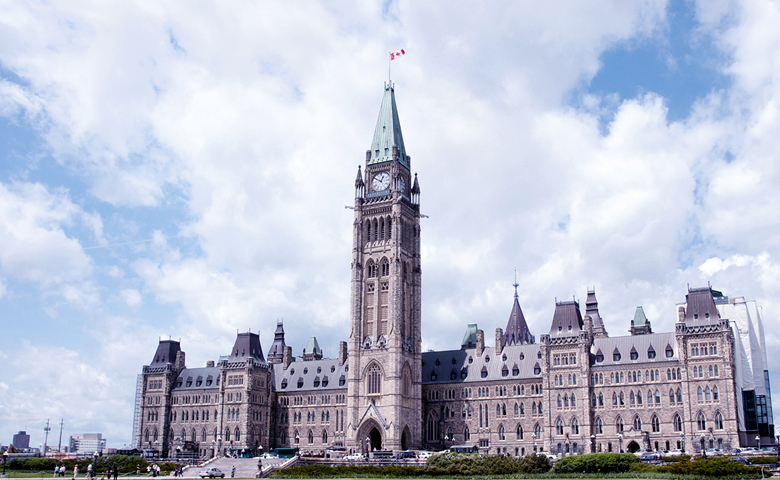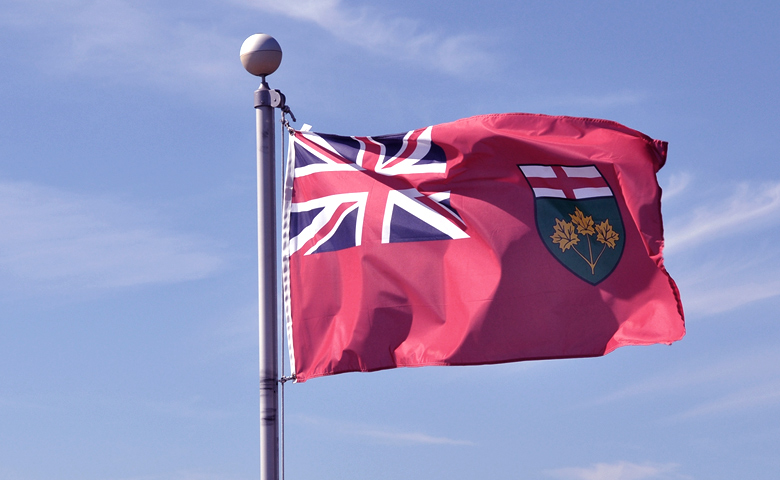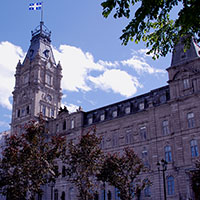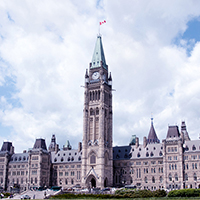On March 19, 2019, Finance Minister Ernie L. Steeves tabled New Brunswick’s 2019-20 budget. The budget projects a $23.1 million surplus in 2019-20 and sees the province’s net debt decrease for the first time in 13 years.
The net debt is currently estimated at $14.1 billion, and is expected to decline by $49 million in 2019-20.
The estimates provided in Budget 2019 show that the province projects a surplus of $4.5 million for the 2018-19 fiscal year, rather than the $188.7 million deficit projected for the same fiscal year in the previous budget.
Tax measures
No changes to the corporate tax rates, or the $500,000 small business limit, are proposed.
Rejecting federal measures on small business limit
The budget indicates that the government will maintain the current rules for the New Brunswick small business corporate income tax rate and will not parallel the federal measures around passive income, which phase out access to the small business tax rate. This makes New Brunswick the second province to deviate from the federal government on these rules, after Ontario.
The rejection of this federal rule at the provincial level means that the small business limit in New Brunswick ($500,000) will not be reduced by any passive investment income earned in the corporation. Therefore, if passive income is high enough to fully eliminate the small business deduction at the federal level, it would result in a 15% federal corporate rate; however, the provincial tax rate would be unaffected and would remain at 2.5%. Overall, this would result in a combined tax rate of 17.5%.
The province has announced, as part of this budget, that it will be paralleling the federal capital cost allowance incentives that were introduced as part of the Fall Economic Statement.
These changes will allow businesses to increase the capital cost allowance deduction that is available in the year of purchase for certain capital expenditures, thereby decreasing taxes payable.
Personal income tax rates
New Brunswick’s personal tax brackets are indexed to inflation on an annual basis. Budget 2019 proposes no further changes to the personal tax brackets and rates.
Harmonized sales tax
Budget 2019 proposes no changes to the current 15% HST rate, which is composed of a federal component of 5% and a provincial component of 10%.
Consult our document below for more details.
You could also like to read
Next article
2019-2020 Budget: More money for our businesses, but more work needs to be done
According to Finance Minister Éric Girard, the aim of the first CAQ government budget is to invest now to control our future. According to the master of the public purse, the budget was prepared “based on your priorities”.
Thanks to the current fiscal surplus estimated at $2.5B at the end of 2018-2019, the Government is projecting a balanced budget this year as well as for the next four years without need to use the stabilization reserve.
A number of the measures announced are designed to put more money in the pockets of Quebeckers, including the gradual elimination of the childcare contribution and a standardized school tax. Adding to the measures announced in the 2018 fall update (like the new Family Allowance and the new tax credit for seniors) which will give $360M back to taxpayers, the Government will now be putting nearly $1B back in the pockets of Quebeckers starting in 2019-2020.
A boost for businesses but not enough to improve tax competitiveness
Labour
To create a more competitive and innovative Quebec, education is the cornerstone. The 5.1% increase in the budget for education and higher education in 2019-2020 would mean an additional $2.4B in resources for education and higher education over five years.
Since the labour shortage is a major issue over the short term, it would have been nice to see measures to speed up worker recruitment. However, we should highlight the announcements aimed at better integrating immigrants into the workforce. With an additional $146M per year over five years, for a total of $730M, the Government wants to implement a new personalized pathway to support immigrants in their integration into Quebec society, including the labour market.
The announcements encouraging workers to stay in the labour market are interesting, including the expansion of the credit for experienced workers and the lowering of the age of eligibility for this tax credit to 60. The reduction in payroll expenses related to wages paid to workers aged 60 and over is also worth mentioning. This reduction would benefit 34,000 Quebec SMEs.
Also, the injection of $75M over six years to support entrepreneurship and encourage the next generation of young entrepreneurs is an interesting announcement to stimulate job creation and entrepreneurial labour, although the amounts could be larger.
Capital and Financing
To stimulate private investment, the government also decided to increase the share capital of Investissement Québec from $4B to $5B in order to be able to carry out more interventions using its own funds. Another measure to be highlighted is the creation of an envelope of up to $1B to support the development of strategic businesses in Quebec and to protect the presence of head offices in Quebec. Given that new technologies are key to productivity and innovation for businesses, the announcement of $329M over six years to accelerate the development and adoption of artificial intelligence by businesses is very good news.
Corporate Taxation
There are no new corporate tax cuts in this budget. In a very competitive business environment, particularly with our neighbours to the south, we have to recognize that this budget gives our businesses more means, but there is still work to be done. The lost tax advantage of Quebec’s economic engines over the Americans must be restored.
For more information on the tax measures announced in the 2019-2020 budget, please consult the document below.
Next article
On March 19, 2019, Finance Minister Bill Morneau presented the government’s 2019-2020 federal budget. This tax alert provides a summary of the tax measures proposed in the budget.
As many had predicted, this pre-election budget features many fresh spending promises, with little in terms of new tax legislation. Although the budget includes some smaller initiatives and technical changes, there are few surprises.
Overall, the most significant changes focus on:
- Skills upgrades and training
- Seniors’ retirement income
- Home-buying affordability
- Innovation
- Regulatory reform
- Country-wide broadband
connectivity
Proposals that might be of particular interest to Canadian businesses include the creation of a new national training benefit program, new funds for research and innovation, measures intended to support entrepreneurs and plans to streamline certain areas of federal regulation to reduce regulatory burden. In addition, provisions concerned with tightening international tax rules and increasing beneficial ownership transparency may prompt some companies to review and update their compliance practices.
The budget was relatively silent on matters related to current and pending trade agreements—with the exception of a promise of support for supply-managed farmers impacted by CETA and CTPPP—and it does not contain any proposals to address the gap in corporate tax rates between Canada and the United States, nor the existing tariffs on Canadian aluminum and steel.
A number of measures were announced where the legislative details have yet to be released—such as new limits on stock options and greater support for intergenerational business transfers—that are worth watching closely as the specifics develop.
Access our full Budget 2019 Summary below.
Next article
Updated on January 23, 2024
There are numerous tax impacts that must be very carefully considered when deciding to leave Canada to live elsewhere.
Analyzing the termination of your tax residence is a question of fact. Generally, the Canada Revenue Agency will consider that you have left Canada if you sever your residential ties with Canada to create new ones in the host country.
Analyzing your residential status generally involves examining your significant and secondary residential ties.
Significant residential ties are:
- The location of your dwelling place;
- The location of your spouse’s and dependents’ dwelling place.
Secondary residential ties include:
- Economic and social ties with Canada (such as employment, financial accounts, interests in Canadian companies, social and recreational activities);
- Personal property in Canada (such as furniture, clothing, automobiles);
- Other ties (such as medical insurance coverage, drivers license, etc.).
Severing Ties with Canada, the Tax Implications
Departure tax
When you leave Canada, you are deemed to dispose of all of your property at its fair market value immediately before you cease to reside in Canada (even if you have not actually sold it). This deemed disposition triggers a departure tax on the gain accrued on this property before your departure.
Some property is specifically excluded from the deemed disposition rule, such as your residence, pension plans (including RRSPs and RRIFs), RESP, TFSA, FHSA and stock options.
Home Buyers’ Plan
If you withdrew funds from your RRSP as part of the Home Buyers’ Plan (HBP), the balance is payable at the earliest of the following two dates:
- Before the date you file an income tax return for the year you become a non-resident;
- 60 days after leaving Canada.
What do I need to do before leaving Canada?
1. List your property at the time of departure from Canada
If the fair market value of the property you own when you leave Canada is more than $25,000, you have to report this property to the Canada Revenue Agency or, failing this, you could be liable for a penalty of up to $2,500.
Some property is excluded from the mandatory reporting requirement, including:
- Cash;
- Pension plans (including RRSPs and RRIFs);
- RESPs;
- Personal use property (such as clothing, household effects, automobiles) with a fair market value of less than $10,000.
2. Notify Canadian payers of your change of tax residence status
If you plan to keep financial accounts in Canada that generate passive income (interest, dividends), you need to notify your financial institutions of your non-resident status so they can ensure appropriate deductions at source are made on income paid after you leave Canada and issue the appropriate tax slips at year-end.
3. Repay your Home Buyers’ Plan balance
You can repay your HBP balance by making RRSP contributions before you leave Canada. Otherwise, the HBP balance will be included in your taxable income in the year of departure.
4. File a departure tax return
You have to file a tax return by April 30th of the year following the year of your departure from Canada.
The purpose of this tax return is to:
- Record the date you leave Canada and change your residence status;
- Report property you own at the time you leave Canada;
- Prepare the appropriate tax election forms;
- Report and pay the departure tax or elect to defer payment of the tax by providing a sufficient guarantee to the tax authorities.
5. Talk to an international tax expert
Our team of international taxation experts can support your emigration process by providing integrated consulting and tax compliance services tailored to your situation.
08 Mar 2019 | Written by :









